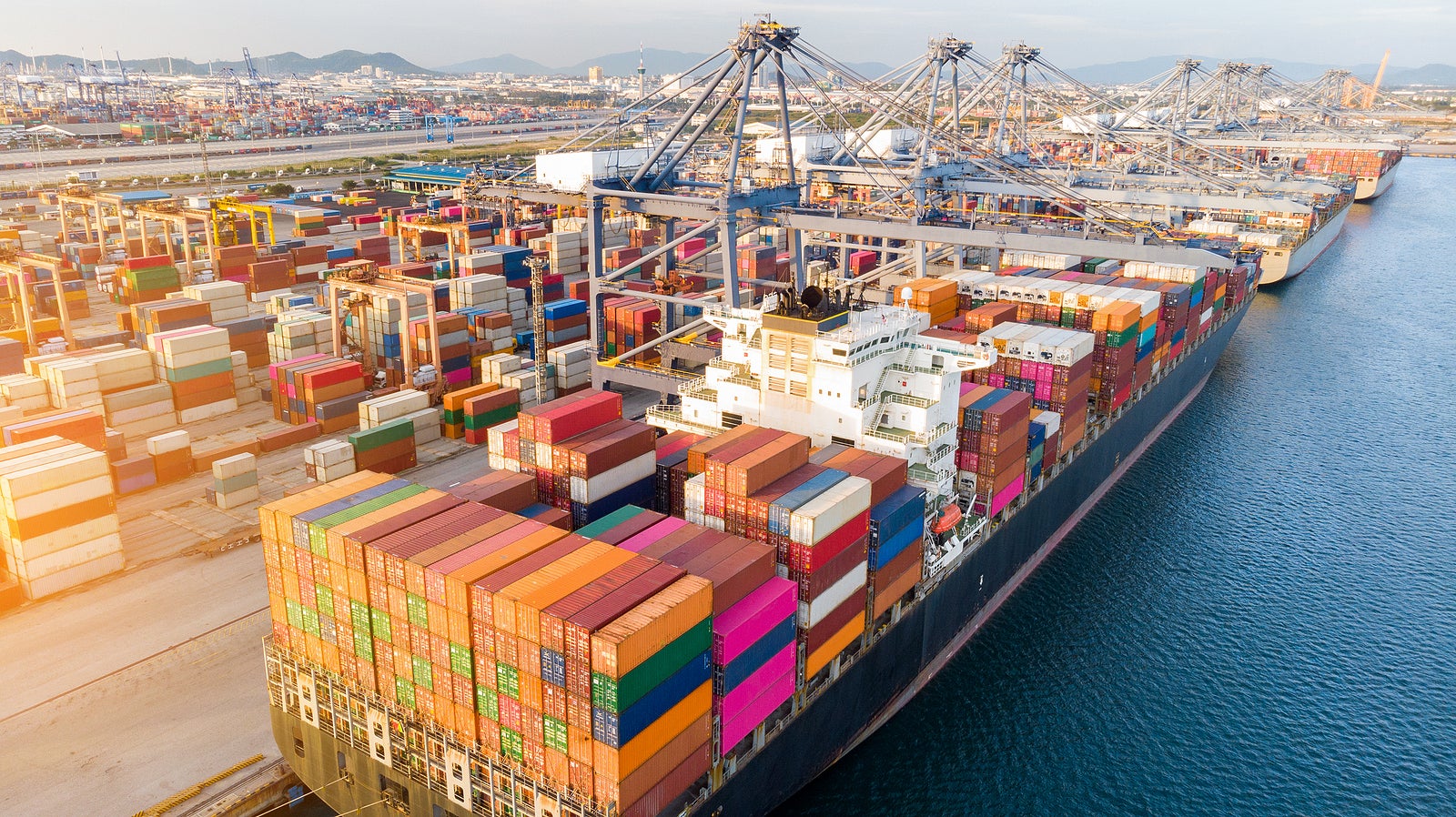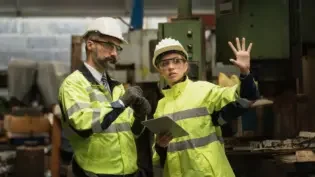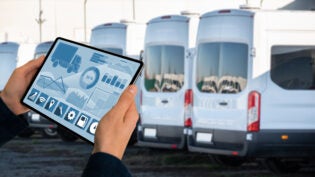
The logistics market is projected to hit $12,975.64 billion by 2027, registering a 6.5% growth rate from 2020 – and it’s no surprise why.
 As the world continues to get interconnected, consumers continue demanding readily available goods at short notice. For these demands to be met, we need resilient supply chain models.
As the world continues to get interconnected, consumers continue demanding readily available goods at short notice. For these demands to be met, we need resilient supply chain models.
The weak link in supply chains over the years has been transportation. In response, companies are working to offer great value to customers’ demands, while keeping their transport logistics budget sustainable.
We’ve seen tremendous growth in logistics advances ever since the 2020 pandemic, and these developments are reported to continue on as top logistics trends for 2023 predict that sustainability and digitization play a significant role in the continued growth and improvement of supply chain management.
An outlook into the future of the logistics industry (whether ocean, air, or ground) focuses on the advanced technologies making their way into our society’s mainstream. These advances revolve around many logistics sectors, including warehousing, mobility, supply chain stability, and security.
What Will Be the Future of Logistics?
It’s difficult to predict the future of global logistics, as it depends on various factors, such as technological advancements and changing customer needs. However, you can look forward to the following trends in transportation and logistics in 2023 and beyond:
-
Shift Toward Logistics 4.0 (The Digitization of Logistics)
For a while now, we’ve been gradually embracing Logistics 4.0 –a new logistics era centered on digitization.
Logistics 4.0 covers facets such as Big Data, networking, and the use of machines and automation. This new era of logistics comes at a time when the supply chain is battling sustainability threats. Digitization can help identify these threats and eliminate them.
 Data is becoming an essential part of logistics. Smarter hardware and newer software are being introduced to collect and exchange more data. As a result, logistics companies can now form patterns over data sets from the past and use them to predict the future.
Data is becoming an essential part of logistics. Smarter hardware and newer software are being introduced to collect and exchange more data. As a result, logistics companies can now form patterns over data sets from the past and use them to predict the future.
Intelligent networking and Big Data can help stabilize the global supply chain. They allow players in this industry to prevent potential disruptions or failures and create alternative solutions to beat deadlines. We can also use the data to optimize transport routes for improved efficiency.
Either way, data in logistics comes from multiple sources, including:
- Location and vehicle diagnostics information
- Traffic and weather data
- Economic developments
- Traditional logistics and business figures provided by companies
- Developments in the production of commodity
-
Growth in Drone Shipping Technology
With the air shipping landscape proving to be volatile, retailers need to stay updated on the latest strategies. Cargo drones are the future of aviation logistics. They can deliver parcels across regions almost without any faults. With drone technology, companies can make last-mile delivery efficient.
It will help increase coordination from shipment to delivery and reduce cost. There is no need to worry about delays due to traffic. Additionally, drone planes can facilitate delivery to the most remote areas.
-
Adoption of Multichannel Logistics
Multichannel logistics is proving to be more than a trend in the industry. It’s a solution that many logistics companies are embracing when processes are on the verge of collapsing. To avoid such risks, diversifying the logistics process is the way to go.
We will see more companies transporting freight by all relevant transport modes, including air, rail, water, and road. This allows companies to seamlessly switch to alternatives whenever they experience a problem with one transport mode.
An excellent example of the dangers of depending on one transportation method is the 2021 Suez Canal obstruction which caused significant disruptions and losses in maritime transportation.
Combining multiple transport forms to deliver goods is relatively cost-effective and timely. An efficient and functional hub that allows a smooth flow of goods can help foster success in multichannel logistics. Both entry and exit points must be unobstructed to avoid the Suez Canal predicament.
-
The Rise of E-Freight
Technology is transforming air logistics with the introduction of end-to-end paperless air cargo transportation. Like most industries, air freight forwarding is looking to reduce paper use in the future.
There will be an introduction of software for digital invoicing, freight tracking, and more. The goal is to create a paperless future in air logistics. This system will help reduce carbon emissions and waste generated by air cargo companies.
-
Increased Cargo Air Cargo Capacity
To help improve the capacity issues, manufacturers will design more planes to carry air freight. This will help meet the demand for air cargo logistics.
Even better, the manufacture of lightweight unit load devices is gradually expanding as this air logistics trend will likely continue. The ULDs will lead to a weight decrease, allowing air cargo companies to increase the number of parcels they can ship in one go. As a result, fuel usage may reduce.
-
Adoption of Electric and Autonomous Vehicles
 Since the shortage of truck drivers is still a big problem in the industry, self-driving vehicles may help solve the looming staffing crisis. Even before we get there, top retailers like Walmart already embrace autonomous cars for faster delivery and improved customer experiences.
Since the shortage of truck drivers is still a big problem in the industry, self-driving vehicles may help solve the looming staffing crisis. Even before we get there, top retailers like Walmart already embrace autonomous cars for faster delivery and improved customer experiences.
On the other hand, electric vehicles will also offer a more eco-friendly and economical solution to transportation. Expect to see further growth in trends in supply chain management driven by electric vehicles soon.
Currently, many logistics companies are using trucks powered by ICEs (internal combustion engines) to deliver goods. However, ICE-powered vehicles are a climate change issue due to their high carbon footprint and costly maintenance.
The Last Mile Delivery is a good adoption of electric and autonomous vehicles in logistics. Because of the many delivery points involved in the last mile of deliveries, this strategy utilizes smaller and eco-friendly vehicles to make these deliveries. Electric bikes, driverless cars, and even drones are used to improve efficiency and reduce costs.
Electric and autonomous vehicles also come in handy because of the following:
- Increased safety thanks to reduced human error
- Longer distances covered thanks to reduced stoppage points
- Compensates for the staffing crisis in supply chains
- Optimized traffic flow thanks to efficient communication
-
Introduction to Regionalization
Globalization made it possible for consumers to have everything they want at any given time and in any quantity. But the rising number of consumers makes it challenging to avail goods on demand. These consumers are also choosy regarding their purchasing choices, meaning they won’t accept alternative items.
Regionalization means reorganizing the manufacturing of products into smaller blocks in more localized economies. The goal of this strategy is to move production closer to the customers. It allows for shorter transport routes to foster trust and authenticity. Logistics companies can now directly contact the people behind a product and fulfill customers’ orders.
Expect more logistics companies to embrace regionalization over globalization. In the long run, processes become more efficient and cost-effective. Regionalization helps address the velocity and agility issues of supply chains. It’s a great way of keeping up with consumers’ growing expectations.
-
Takeover by Robots
According to “Gartner Predicts the Future of Supply Chain Technology,” about 75% of major enterprises will have introduced some form of intralogistics smart robots in their warehouse operations by 2026.
We’re living in an age where warehousing is becoming more complex, and companies need more efficient and agile operations for success. Investing in automated storage and retrieval systems can be a game changer.
Logistics robots are rising due to the need to optimize processes and cut costs. They help improve competitiveness by ensuring that systems are functional 24/7.
Logistics robots are simply warehouse machines or systems that maximize safety, foster productivity, and automate product flows. These robots are more prevalent when implementing new technologies in warehouse processes, working autonomously, and reducing the risks of errors.
When embracing logistics automation, different robots and machines are involved. Logistic robots today can perform various functions, including:
- Storage and retrieval of items from racks
- Goods received and dispatched
- Internal goods movements
- Order picking
- Transportation
-
Shift to Sustainable Logistics
A major trend in the future of transportation and logistics is sustainability. More companies are going to focus on sustainability and lower their carbon footprint. Expect greener and more sustainable supply chain, logistics, and freight practices.
The logistics industry accounts for about 24% of carbon dioxide emissions globally. With the looming climate change crisis, it’s time to adopt more eco-friendly solutions to sustain current and future operations.
 A comparison chart showing carbon emissions from different transport sectors (Road, Aviation, Sea, Rail, etc.) Source: https://www.statista.com/statistics/1185535/transport-carbon-dioxide-emissions-breakdown/
A comparison chart showing carbon emissions from different transport sectors (Road, Aviation, Sea, Rail, etc.) Source: https://www.statista.com/statistics/1185535/transport-carbon-dioxide-emissions-breakdown/
One great way to achieve sustainability in logistics is by replacing ICE-powered vehicles with electric vehicles. We also predict that more logistics companies will employ carbon reporting for transparency reasons.
With this reporting, companies can share insights about their pollutant emissions. As a result, they can work toward lowering these emissions and sensitizing the whole industry to do the same.
Some of the sustainable logistics practices expected to dominate the industry include:
- Using environmentally friendly freight modes
- Reviewing logistics operations to identify sustainability improvements
- Optimizing routes to lower idle/congestion time and travel distance
- Using distribution locations to create or route loads
- Keeping trailers/containers full to prevent energy waste
- Exploring green technology when necessary
- Enrolling in the EPA SmartWay program to monitor fuel efficiency and emissions
-
5G Will Streamline the Logistics Chain
5G is the next generation of wireless technology and cellular networks. It offers the highest connection speeds with low latency. Compared to 4G, it’s projected to handle ten times faster download rates.
While we can use 5G on phones to enhance day-to-day communications, it can revolutionize the logistics sector too. Since it enables stable connections between connected devices and respective networks, it can help pave the way for more internet-based devices to be integrated into the logistics supply chain.
Expect 5G to improve business and logistics processes in the following ways:
- Enabling a new wave of intuitive logistics to manage fleet and inventory better
- Improving supply chains with ease of tracking items in real-time
- Making it more accurate to find routes to send time-sensitive freight
Moreover, devices with AR (Augmented Reality) functions can work well when powered by 5G in warehouses. They can help employees locate a single product stacked between thousands of similar items. Even better, 5G networks can send large data sets instantaneously and render photos in real time.
-
Use of Green Fuels for Shipping Vessels
Thousands of oil spills occur in the ocean every year. They can happen in different ways – from small oil spills when refueling a ship to massive oil spillage that occurs when drill operations go wrong, oil tanker ships sink, or oil pipelines break.
 Infographic on the effects of oil spillage – diseases, negative economic impact, pollution, aesthetic issues.
Infographic on the effects of oil spillage – diseases, negative economic impact, pollution, aesthetic issues.
Oil contains many toxic compounds that pollute the water and kill marine life. What’s more, most ships use heavy fuel oil. When burned, it produces high levels of carbon dioxide and other pollutants that negatively affect the environment.
For more eco-friendly shipping, sustainable marine fuels for cargo ships are the future. They will help reduce carbon-dioxide emissions, protecting the environment.
-
Introduction of Blockchain in Logistics
Blockchain works as a decentralized database stored simultaneously across multiple internet-connected computers. It can be a crucial game changer in logistics besides its association with cryptocurrencies.
Companies can employ blockchain to manage supply chains from the processing plant to the consumer. They can mark each container using unique identifiers with specific details about the product’s origin. These details include manufacturer, shipping date, expiration date, lot number, and more.
Pairing containers with unique identifiers makes tracking goods at any stage of the transportation cycle easier. It can also be used to confirm authenticity, eliminating issues with counterfeit products.
Expect a great shift from traditional ledger-based systems to blockchain for security purposes. Algorithmic signatures can be used to prevent unwanted access to data exchanged in the blockchain,
Additionally, payments made through the blockchain are trackable as they store detailed communication records between the involved parties. Thus, blockchain money transfers carry a low risk of error and fraud.
-
Digital Freight Brokerage Will Be a No-Brainer
Logistics efficiency largely depends on information exchange between freight forwarders and carriers. These parties must agree on transport conditions, destinations, pick-up schedules, and delivery times.
Traditional freight brokers act as intermediaries between truck drivers and shippers. Back then, it was quite tricky to broker deals around the clock. Brokers only worked during set working hours and the multiple time zones and language barriers made it more difficult.
Thanks to the rise of the internet, we have various digital freight brokerage software today. As a result, goods move from one place to another faster and at lower rates. The real-time matching of goods and transportation help streamline shipping, making logistics cheaper.
 Digital freight brokerages can take the form of mobile apps or online marketplaces where truck drivers and shipping companies can connect, eliminating the need for a middleman.
Digital freight brokerages can take the form of mobile apps or online marketplaces where truck drivers and shipping companies can connect, eliminating the need for a middleman.
Logistics Trends in 2023: What is the Future of Logistics?
We’ve already seen many innovations being introduced in the logistics industry. We also expect to see newer technologies that’ll simplify processes and stabilize supply chains worldwide. With that said, the future of logistics and supply chain management seems brighter than ever, promising more lucrative opportunities.
Our processes need to adapt as we cope with increased digitization and climate change concerns. We need to explore and get the most out of new technologies.
These emerging logistics trends predictions for 2023 can help you stay competitive and on top of your game.
Author: Robert Khachatryan is the CEO of Freight Right Global Logistics, an international freight forwarder based in Los Angeles, California. From logistics consulting and warehousing to drayage and global forwarding, they’ve got you covered.
1755 Views















